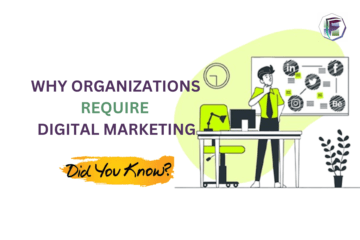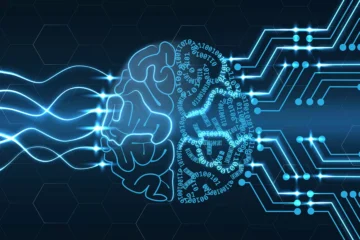8 Best Technology Trends And Future Scope
Progressive Web Apps:
Progressive Web Apps (PWAs) have been gaining popularity in recent years as an alternative to traditional native apps. PWAs are essentially web applications that are designed to look and feel like native apps, but are built using web technologies such as HTML, CSS, and JavaScript. They offer a number of benefits over traditional native apps, including lower development costs, improved user engagement, and better discoverability.
The future scope of PWAs is vast and varied. For one, they can be used to create web experiences that work seamlessly across devices and platforms, allowing users to access the same experience regardless of the device they are using. This is particularly important in today’s world, where users are accessing the internet from a wide range of devices, including smartphones, tablets, and desktops.
Artificial Intelligence (AI and ML):
Artificial intelligence (AI) is rapidly advancing and has the potential to transform virtually every aspect of our lives. AI refers to the ability of machines to perform tasks that would normally require human intelligence, such as understanding natural language, recognizing images, and making decisions based on data. With the development of AI technologies such as machine learning and natural language processing, there are numerous potential applications across a wide range of industries.
Overall, AI has the potential to revolutionize the way we live, work, and interact with technology, making our lives more efficient, convenient, and safe. However, there are also concerns about the potential risks and ethical implications of AI, particularly around issues such as privacy, bias, and job displacement.
Motion UI:
Motion UI is a design trend that has been gaining popularity in recent years. It involves using animation and other visual effects to create more engaging and dynamic user interfaces. While it may seem like a purely aesthetic feature, Motion UI has many practical uses and applications that make it a valuable tool for designers and developers. Looking ahead, the scope of Motion UI is only expected to grow as technology continues to advance. As new devices and platforms emerge, designers and developers will need to adapt and create interfaces that work seamlessly across multiple devices and screen sizes. Motion UI will play a key role in achieving this goal by creating more dynamic and engaging interfaces that are optimized for user experience.
Block chain Technology:
Block chain technology is a decentralized and distributed digital ledger technology that is used to record and verify transactions. It enables the creation of a tamper-proof database that is secure, transparent, and immutable. The ledger is maintained by a network of computers or nodes, which work together to validate and record transactions in a block. Once a block is added to the chain, it cannot be altered or deleted, providing a high level of security and transparency. Block chain technology is the underlying technology behind cryptocurrencies like Bitcoin, but it has many other potential applications in industries such as finance, healthcare, supply chain management, and more.
In recent years, block chain technology has been gaining more and more attention as a potential game-changer in many industries. Block chain is a decentralized, distributed ledger technology that can be used to record and verify transactions without the need for a central authority. It has the potential to revolutionize the way we conduct business, store data, and protect sensitive information. In this blog post, we will explore the features and benefits of block chain technology, and how it may shape the future
Cyber Security:
Cybersecurity refers to the practice of protecting computers, servers, mobile devices, electronic systems, networks, and data from malicious attacks, theft, damage, or unauthorized access. It involves a set of technologies, processes, and practices that are designed to prevent, detect, and respond to cyber threats, such as hacking, viruses, malware, phishing, and other forms of cybercrime. The goal of cybersecurity is to ensure the confidentiality, integrity, and availability of digital assets and systems, and to minimize the risk of data breaches and cyber-attacks. Cybersecurity is becoming increasingly important as more and more aspects of our daily lives are being conducted online, from banking and shopping to socializing and communication.
As we move further into the digital age, cybersecurity has become a critical concern for businesses and individuals alike. With the rise of new technologies and the increasing sophistication of cyber-attacks, it is more important than ever to stay vigilant and proactive in protecting against emerging threats. In this blog post, we will explore some of the key cybersecurity challenges of the future, and what steps we can take to safeguard against them.
Voice Search:
Voice search technology has come a long way in recent years, and it’s changing the way we interact with technology. From virtual assistants like Siri and Alexa to voice-enabled devices like smart speakers, voice search is becoming more and more integrated into our daily lives.
Single Page Application:
Single page applications (SPAs) are a new way of building web applications that offer a faster and more seamless user experience. Unlike traditional web applications that require a full page refresh each time the user interacts with the application, SPAs load all necessary resources upfront and dynamically update the content as the user interacts with the application. In this blog post, we’ll explore what single page applications are, their advantages, and some best practices for building them.
Internet of Things(IoT):
The Internet of Things has the potential to revolutionize many industries, from manufacturing and healthcare to transportation and agriculture. By connecting everyday objects to the internet, businesses and individuals can gain greater insights into how these objects are being used and how they can be improved. This can help to increase productivity, reduce waste, and improve overall efficiency.







